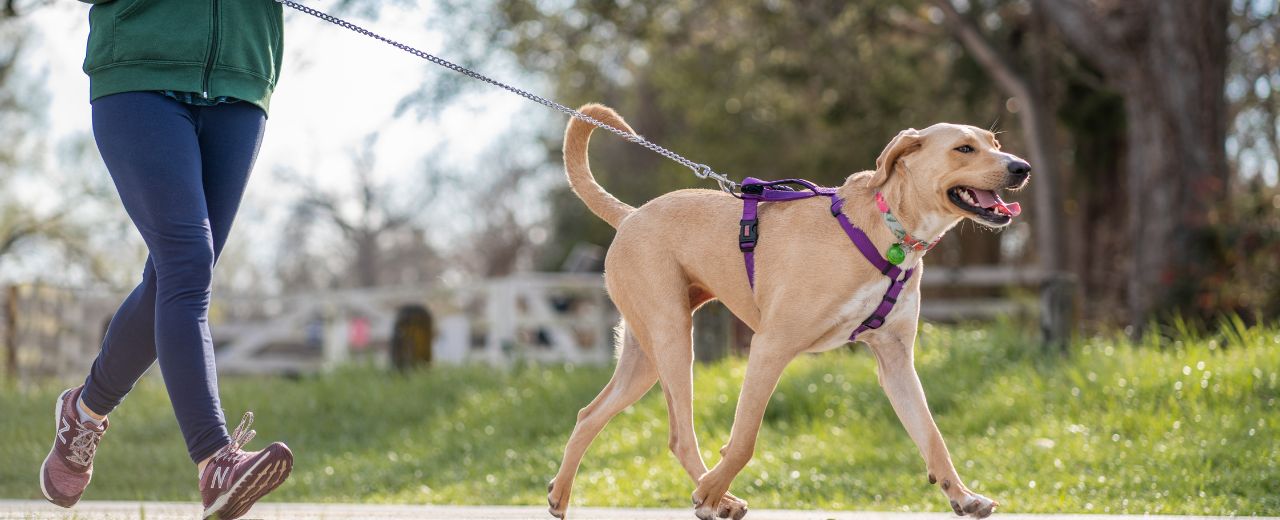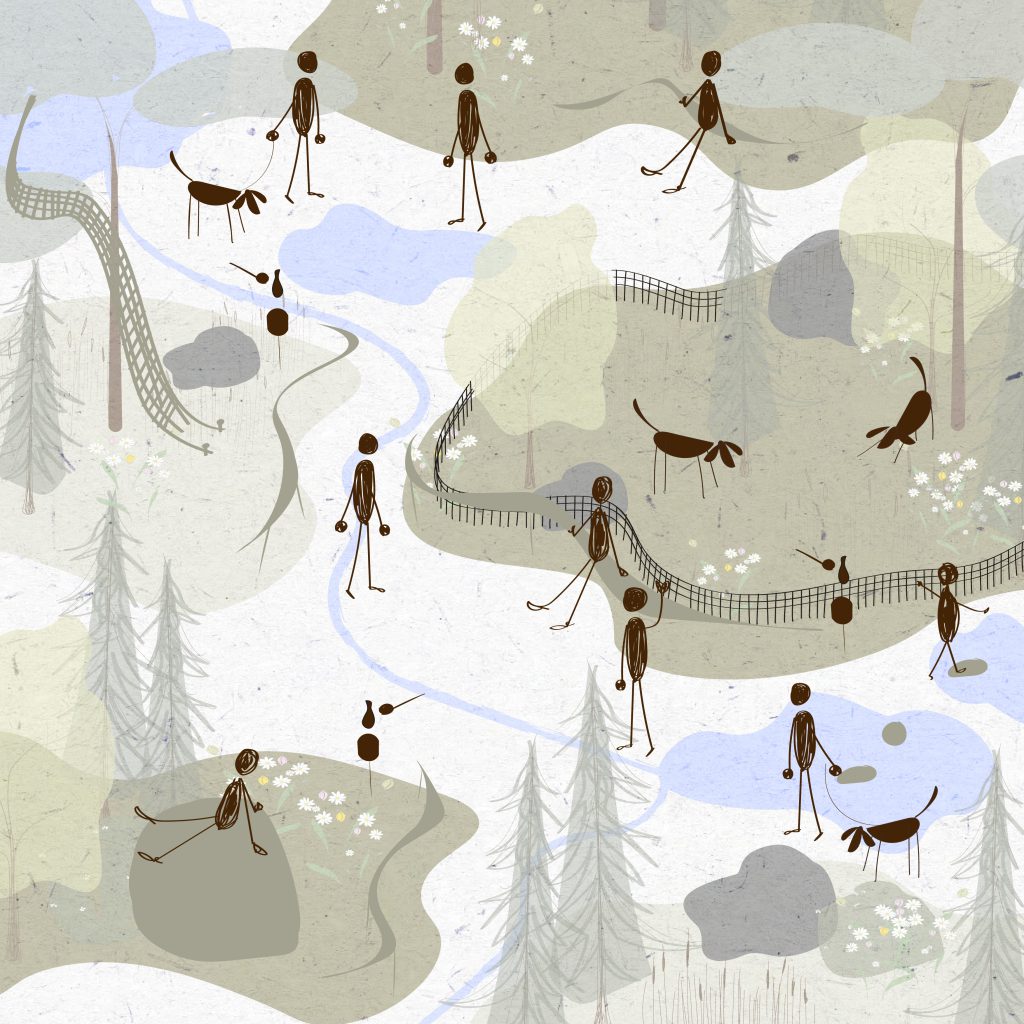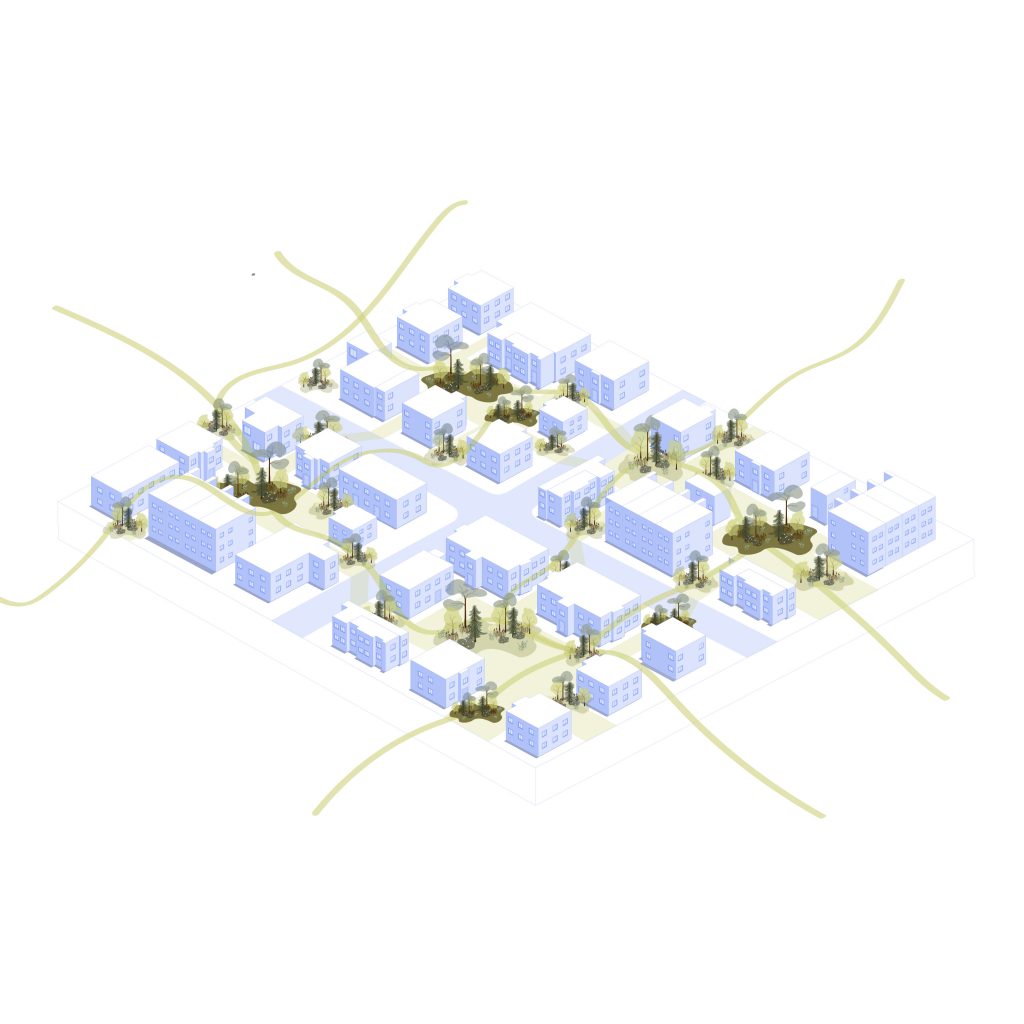
Sustainable Urban Coexistence

Adan L. Martinez-Cruz
Senior Lecturer, at the Department of Forest Economics, SLU
“It is the year 2035. As we gather in the central plaza to participate in the Coexistence Festival –first of its type worldwide—, we feel proud that Umeå has become a global example of harmonious urban coexistence. Citizens stroll through expansive green spaces designed not only for human enjoyment but also as safe havens for wildlife and well-structured areas for pets. During the last decade, the municipality has embarked on a journey to reshape urban green spaces (UGS) based on the values and preferences of its residents, revealing a shared vision that extended beyond human-centric planning.
Through implementing key policy interventions, Umeå invested in interconnected UGS, funded by a modest tax increase that residents willingly supported. The new spaces allow citizens, pets, and wildlife to coexist, with designated dog areas, wildlife corridors, and even an educational program for dog owners that promotes responsible pet care within shared spaces. Local policymakers also integrated a comprehensive citizen engagement process in urban planning, ensuring that UGS management continues to reflect public values. This transformation not only has elevated the quality of life but also proved that sustainable coexistence is not only possible but highly valued by the community. Umeå’s achievement has set a benchmark for cities worldwide, showing that inclusivity in urban design can truly benefit all its inhabitants.”
Back to 2024
As we walk back from a meeting with Umeå’s public officials, on an overcast afternoon, I reflect on the latest phase of our project. At this stage, we are working closely with both community members and local government, an effort that has been equally enlightening and challenging.
The project goal is to identify policy interventions that balance human, wildlife, and dog welfare in urban green spaces. This is ambitious, but it’s becoming clear that “balance” itself is elusive as preferences vary widely among citizens. This project has pushed us to go beyond traditional environmental planning frameworks and draw from ecology, sociology, and behavioural economics, to mention a few disciplines, to shape an approach that might actually work for everyone involved. This inter- and transdisciplinary approach is rooted in the need to address simultaneously health and well-being of humans and other living beings benefiting from UGS –benefits that include not only physical and mental health of humans but, for instance, the wellbeing of pollinators and other animals essential to sustain biodiversity worldwide (Cameron et al., 2020; Daniels et al., 2020; Reyes-Rivero et al., 2021).
What is particularly striking at this stage is how people respond to the idea of interconnectedness—not only of green spaces but of the various beings within them. We are observing that, although residents are at large open to integrated spaces, the underlying concerns about safety and space competition are deeply rooted. For example, discussions on shared areas for dogs and wildlife have revealed tensions; many people support the concept in theory but remain hesitant when asked about changes that might restrict certain human and/or pet activities –e.g. limiting the urban green spaces to which pets –and even humans— have the right to access so that wildlife thrives—.
As we move forward, I am aware that we are treading a delicate line. To achieve true coexistence, our team is compelled to ask some uncomfortable questions: Should green spaces prioritize urban wildlife, even if that means curbing access to human leisure? Do we treat dogs as urban citizens with as much right to roam as humans?
The next steps will demand that we do not simply measure preferences but truly understand their roots and engage in ethical concerns. It is a critical, transdisciplinary process—more complex than we first anticipated—but it feels essential if we are going to create spaces that allow everyone, not only humans, to thrive.
Back to the URBAN FORESTSCAPES theme page.
Project title: Exploring urban harmony: Citizens’ preferences regarding policy interventions to balance pet dogs, wildlife, and human health in sustainable city design – A case study of Umeå
Timeline: September 2023-June 2024
Contacts/Team members (Alphabetical order):
Emelie Aktanius, Adjunct Lecturer, School of Architecture, Umeå University, aktanius@gmail.com.
Dohun Kim, PhD Student, Department of Forest Economics, SLU, dohun.kim@slu.se.
Adan L. Martinez-Cruz, Senior Lecturer, Department of Forest Economics, SLU, adan.martinez.cruz@slu.se.
Pedro Obregon Santander, PhD Student, Department of Forest Economics, SLU, pedro.obregon.santander@slu.se.
Suze van der Zwet, Research Affiliate, Department of Forest Economics, SLU, suze.van.der.zwet@slu.se.
More material
Exploring Sustainable Urban Coexistence – Presentation by Suze van der Zwet at I.A.M. Public Space 2024
Urban Forests: Adaptive and participatory governance in Urban Green Spaces –project led by Pedro Santander Obregon.
Urban Forests and recreation –project led by Camilla Widmark.
Sustainable European Cities and Digitalization.Circular Biocities: from a concept to the new urban reality.
References
Cameron, R. W., Brindley, P., Mears, M., McEwan, K., Ferguson, F., Sheffield, D., … & Richardson, M. (2020). Where the wild things are! Do urban green spaces with greater avian biodiversity promote more positive emotions in humans? Urban ecosystems, 23, 301-317.
Daniels, B., Jedamski, J., Ottermanns, R., & Ross-Nickoll, M. (2020). A “plan bee” for cities: Pollinator diversity and plant-pollinator interactions in urban green spaces. PloS one, 15(7), e0235492.
Reyes-Riveros, R., Altamirano, A., De La Barrera, F., Rozas-Vásquez, D., Vieli, L., & Meli, P. (2021). Linking public urban green spaces and human well-being: A systematic review. Urban forestry & urban greening, 61, 127105.


